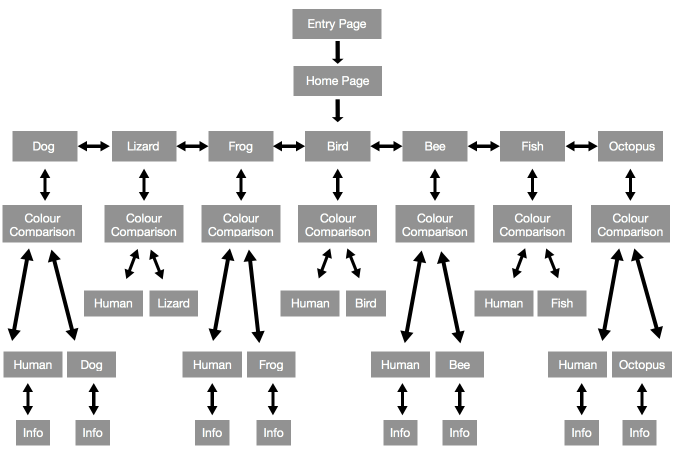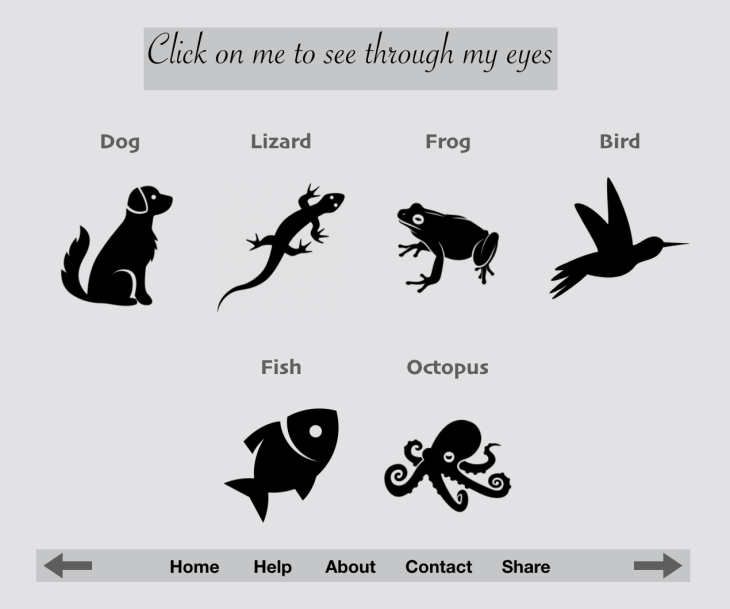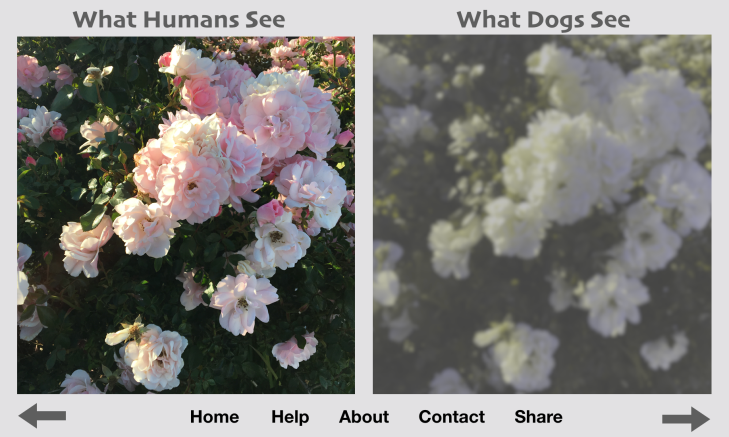Development Blog Post 1:
I have generated a couple of ideas for this assessment, but I have yet to decide on one. At this point I have just been browsing online and searching for an idea to settle on. My initial ideas included; plastic surgery in the celebrity community, drug use before and afters, and effects of climate change on the environment.
Development Blog Post 2:
By now I have decided on what to do for this assessment. My interest was initially ignited by a topic I have previously pondered on; how us humans can not see beyond our immediate vicinity. This propelled me to contemplate the dynamic sphere of dimensions within perspectives and seeing beyond our subjective views. Although I was referencing other humans in this case, it sparked the idea of seeing from not merely other humans, but other creatures. This topic is of my interest and was one that I perceived as feasible and engaging.
Development Blog Post 3:
I decided to name my documentary “Through My Eyes”. I begun exploring other interactive web documentaries and re-visiting assessment one in order to propose an engaging, effective, and visually appealing project. I decided it would be most suitable for this project to predominantly focus on the visual and educational components.
Final Proposal
Synopsis
Through My Eyes is a stimulating and unique interactive web documentary. It utilises audio, photography, and digital assets to construct an educational yet entertaining experience for its users. The objective of this project is to showcase how different animals see their surroundings, and to educate on the physiology behind it, whilst maintaining a fun and approachable ambience.
Background Context
Before we begin exploring how animals see, we will first briefly overview how human eyes function. “In order for us to see, light rays must be bent, or “refracted,” so that they can reach the retina. Once the light reaches the retina, it’s picked up by millions of “photoreceptors,” or light-sensitive cells, called cones and rods. These cones and rods convert the light waves into information your brain can process, like colour, shape, and motion.” (Levine, 2017). She proceeds to discuss how animals see; “Animals have differing types and levels of colour vision. They can full under each extremity on this incredibly wide scale. Basically, rods interpret light, and cones interpret colours. Animals that are truly colourblind completely lack cones, and animals that can only see during the day completely lack rods – but these extremes are uncommon, and most animals have a combination of cones and rods.” Hendry (2017) further explains; “Each cone type contains a pigment sensitive to particular wavelengths of light. The range of colours an animal sees depends on the combination of colour-sensitive pigments in their eye and the processing by the brain.”
The animals I chose to include in my documentary are the; dog, bird, lizard, frog, bird, fish, bee, and octopus
I meticulously chose these animals considering these factors;
- Including at least one land, water, and air dominant animal.
- For the purpose of maintaining consistency, I will not be including specific species.
- Animals that best represent their category:
-
-
-
- Under vertebrates I included: mammals, reptiles, amphibians, birds, fish.
- Under invertebrates I included: arthropods and mollusks.
-
-
Outline of Research
Through My Eyes will explore how seven different animals see the world. These include the: dog, lizard, frog, bird, fish, bee, and octopus. In the outline I will mostly only include information regarding how these animals see colour, due to relevancy. For the purpose of this project, I felt it was more fitting and effective to select animals that have slightly more developed eyesights. For example I chose the lizard over other reptiles such as the snake, because snakes largely rely on their sense of smell and taste, rather than their eyesight.
Despite common misconception, dogs are not completely colour blind, they have a dichromatic colour perception. They only have two cones; yellow and blue. This however, does not imply that dogs can not see green or red – they are just unable to distinguish green, yellow or red objects based on the colour. “They can still distinguish red from green if there is a difference in the perceived brightness of the two. The colour vision of dogs is similar to a person suffering from deuteranopia (red-green colour blindness).” (Dog Vision, 2013). They have also evolved to better suit night-time hunting. “Their eyes have a high density of rods, which are the cells that are sensitive to dim light. This means they can see normally with as little as 15% of light that humans would need. Also, their pupils function much as the aperture for a camera does, dilating significantly when they need to take in extra light. However it’s a myth that cats and dogs can see in the pitch dark. Like all animals, some light is required for the eye to function properly.” (Vet West Animal Hospitals, n.d).
“Lizards have typical vertebrate eyes”. (Team, n.d.). Some lizard species have cones that allow them to see ultraviolet colours. Many lizards have a third eye called the Parietal Eye, which is located on the top of their heads. Its key function is to determine light levels. King-Wai Yau of John Hopkins Medicine did a study in 2006 to illustrate how some lizards are able to see two colours; green and blue, with their parietal eye. “It’s possible that distinguishing between these colours allow the lizards to determine the time of day as the colours of daylight shift with the sun.” (Team, n.d.)
Frog’s eyes are on the top and sides of their heads. This placement allows them to view a larger field than humans – they can see almost 360 degrees around them, which is especially useful for a species that can’t turn their heads. They have evolved to mainly see objects that are moving. “Frogs are nearsighted with a focal length of approximately 15 cm, while the focal length of a human eye is about 2.2 cm. Frogs are nocturnal, and their eyes contain a layer of tissue called Tapetum Lucidum, which is not present in the human eye, that allows them to see at night. Humans have only one type of rod, with maximum absorption of light at a wavelength of 502 nanometers (green light). The eye of a frog contains this rod plus an additional one, with peak absorption of light at 433 nanometers (blue light). This rod allows superior detection of blue light in amphibians.” (Khanwilkar, 2014).
Birds are able to see parts of the ultraviolet spectrum, and they have more acute vision – they can differentiate between similar shades of colours. They have four cones, and though this varies between species, it is generally higher than other mammals. “Each cone in a bird’s eye has a drop of oil in it that selectively filters out certain colours, giving birds greater sensitivity to different colour shades. This wavelength filtering allows birds to more easily see contrasts in their surroundings”. (Mayntz, 2018).
Fish live underwater, where light is minimal and functions differently. Water also reduces colour intensity, making the colours look different. Most fish can see ultraviolet colours. “The majority of fish have developed eyes that will detect the type of colours typical of their environment. For example, inshore fish have good colour vision, whereas offshore fish have limited colour vision and detect only a few if any colours other than black and white.” (Ross, 2011).
Bees all have two large compound eyes. “Like us, bees are trichromatic. That means they have three photoreceptors within the eye and base their colour combinations on those three colours. Humans base their colour combinations on red, blue and green, while bees base their colours on ultraviolet light, blue and green. This is the reason why bees can’t see the colour red. They don’t have a photoreceptor for it.” (Riddle, 2016). Ultraviolet sight is crucial for bees because many flowers have ultraviolet patterns on their petals – it assists bees in seeking nectar. They also have the fastest colour vision in all animals – five times faster than humans.
Octopuses only have one type of light receptor, which should imply that they can’t distinguish colours. Yet the way their pupils are shaped allows them to, as light enters their eyes through the lens from many directions, rather than straight into the retina – this is called chromatic aberration. “Their vision is blurry, but the blurriness depends on the colour. They would be comparatively bad at resolving white objects, which reflect all wavelengths of light. But they could fairly precisely focus on objects that are purer colours, like yellow or blue, which are common on coral reefs and rocks and algae.” (Stubbs, 2016).
Intended Audience and Platform Choice
Through My Eyes is an all inclusive project that is welcoming to a wide demographic of audiences. A broad spectrum of people may be intrigued by Through My Eyes, as interest in animal related content is fairly common. If I had to define a target market, I would say an age range of around 5 to 40. This is because people between these ages are generally more tech savvy and are more frequent users of the internet. I do however, believe that this documentary could be especially popular amongst young children as the content will likely appeal to them, whilst also using simple language and clear instructions. I can envision it becoming a useful tool to assist teachers in school, hence broadening the target market age range.
Although its perceived audience may appear extensive, there are a few limits to note. Since the documentary is in English, it may be difficult for those who do not understand the language to engage with it. The documentary also requires a certain level of understanding for technology and digital skill to operate. Additionally, it is only compatible with desktop computers and laptops with access to the internet. These will limit the potential users as it excludes the population of those that do not fall under these categories. It does not require Adobe Flash Player to operate, which allows for higher accessibility.
Social Media Integration
Links to social media platforms such as Facebook, Instagram, and Twitter will be embedded in all of the pages excluding the entry page, under the “Share” tool at the bottom right-hand side of the navigation bar. These platforms will promote the project at minimal to no expense, whilst reaching global audiences. It would be closely monitored and frequently updated to better engage with users, educate, and create conversations in regards to the relevant issues surrounding the content.
Outline of Project Structure and Wireframe
Figure 1: Wireframe

As figure one exhibits, the user journey begins with a click in the entrance page which directs them to the home page, where there will be seven animal selections. Following each one will be a comparison picture of what the human eye sees, and what that particular animal does. A click on the human view or animal view will reveal pages of information that gives some easy to understand background context and physiological explanation. There is a “back” button and a “next” button in the navigational bar, so that the user can freely direct their experience.
Through My Eyes employs user-intuitive navigation that aims to attract attract audiences, and allow them to explore freely to their own accord. Although the documentary is intuitive, it is also designed to reach the widest audience as possible. This includes those who may not be skilful with technology and those who are young. The navigation bar at the bottom of all the pages (excluding the entrance page) assists those who may come across difficulty. Specifically the “help” menu will provide clear instructions on how to explore the documentary, which can be done in a linear or non-linear fashion. The “home” menu will allow the user to be redirected to the home page from any section they are in. These along with the other menus; “about”, “contact”, and “share” will work together to assist users of all skill levels to manoeuvre around the documentary with ease.
Concepts for Interface Design
Figure 2: Entrance page mock design

Through My Eyes combines visual and audio components to guarantee an engaging and stimulating experience for its users. In addition, quality content, usability, navigability, and accessibility, are all aspects that I have taken into consideration to enhance the user’s journey. The minimalistic theme, along with easily comprehendible language and clear instructions, fosters an intuitional user experience.
Figure 3: Home page mock design (after entering the documentary)

(Icons by Noun Project and Freepik)
As I have yet to produce my documentary on Hype, I am unable to demonstrate the moving or audial elements. Each page will fade smoothly and transition into the next seamlessly. Once the mouse is hovered over an animal, the image will enlarge and the sound that animal makes will be played.
From here on out, the user can explore the documentary in an non-linear fashion. If the user clicks the bottom right-hand side arrow in the navigation bar instead of choosing an animal, the documentary will roll through the whole roster of them. At any time, if the user wishes to exit the animal or which ever section they are in, they can click the “Home” menu, which will bring them back to the page with all the animals. If they simply wish to go back or forth (as there will be a couple of pages of information on each animal), they can click the bottom left-hand side arrow.
Figure 4: Colour vision comparison page design (after selecting an animal)

(My photography and edited with Photoshop).
The black, white and grey theme will be consistent throughout, until the colour vision comparison page to accentuate the concept of colour raised in the documentary. Here lies the key section of the documentary, as the main objective is to illustrate the differences between human and animal colour vision. Once the animal vision section is clicked on, there will be a couple of pages of information regarding that animal. This is the same for the human vision section (note that the information on human vision will be the same in every comparison).
Evidence of Feasibility
Through My Eyes does not incorporate any personal or sensitive information. The content is appropriate for all ages. Copyright laws will be abided through using free images and icons with credit given to the website. The large amount of images in the “creative commons” results may also be of use to this project. The audial components featured in my project such as the animal sounds can be freely accessed and utilised through the “Free Sound” website and other websites with the same cause. This will eliminate the possibility of copyright issues.
In terms of actualising this proposal, although I am not an expert in digital illustrations, video editing or photoshop, through attending tutorials and the Hype workshop, I am confident in my skills gained thus far to produce a well executed interactive web documentary.
Reference List
Austin, T. & Doust, R. 2007, New media design, Laurence King, London pp. 63-90.
Ben Team n.d., Do lizards see colors?, Pets on mon.me, last viewed 5 May 2019, <https://animals.mom.me/lizards-see-colors-5023.html>.
Colour Matters n.d., How Animals See Color, Hawaii USA, last viewed 3 May 2019, <https://www.colormatters.com/color-matters-for-kids/how-animals-see-color>.
David Ross 2011, Fish Eyesight: Does Colour Matter?, Midcurrent, <https://midcurrent.com/science/fish-eyesight-does-color-matter/>.
Dog Vision 2013, Dog Vision, last viewed 11 May 2019, <https://dog-vision.com/>.
Jennifer Levine 2017, 5 things you didn’t know about how animals see color, Cross Talk, Boston USA, last viewed 3 May 2019, <http://crosstalk.cell.com/blog/5-things-you-didnt-know-about-how-animals-see-color>.
Lisa Hendry 2016, How do other animals see the world?, Natural History Museum, London UK, last viewed 3 May 2019, <http://crosstalk.cell.com/blog/5-things-you-didnt-know-about-how-animals-see-color>.
Maddie Stone 2016, Octopus Eyes Are Crazier Than We Imagined, Gizmodo, NSW Australia, last viewed 5 May 2019, <https://www.gizmodo.com.au/2016/07/octopus-eyes-are-crazier-than-we-imagined/>.
Melissa Mayntz 2018, How Birds See Colour, The Spruce, last viewed 12 May 2019, <https://www.thespruce.com/how-birds-see-color-386467>.
Robert Sanders 2016, Weird pupils let octopuses see their colorful gardens, Berkeley News, California USA, last viewed 5 May 2019, <https://news.berkeley.edu/2016/07/05/weird-pupils-let-octopuses-see-their-colorful-gardens/>.
Sarah Griffiths 2015, See the world through an animal’s eyes: Software reveals how colours entirely change when viewed from a bee or lizard’s perspective, Daily Mail, last viewed 5 May 2019, <https://www.dailymail.co.uk/sciencetech/article-3186938/See-world-animal-s-eyes-Software-reveals-colours-entirely-change-viewed-bee-lizard-s-perspective.html>.
Sarika Khanwilkar 2014, “Eye” Wonder: 10 Things You Didn’t Know About Frog Eyes, Conversation Summit Jackson Hole Wildlife Film Festival, last viewed 5 May 2019, <https://jhwildlifefilm.wordpress.com/2014/07/28/eye-wonder-10-things-you-didnt-know-about-frog-eyes/>.
Sharla Riddle 2016, How Bees See and Why it Matters, Bee Culture the Magazine of Bee Culture, Ohio USA, last viewed 5 May 2019, <https://www.beeculture.com/bees-see-matters/>.
Vet West Animal Hospitals, Can Animals See Colour?, WA Australia, last viewed 3 May 2019, <https://www.vetwest.com.au/pet-library/can-animals-see-colour>.